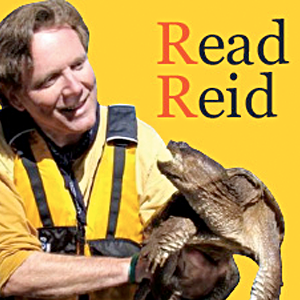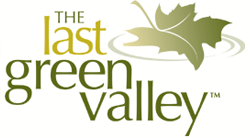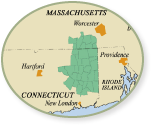
Dedicate yourself to make a difference in nature
“The Solstice past, the year tends toward Spring. But you would never know it. The old saying, ‘days lengthen, cold strengthens’ is proved in January.”
– Hal Borland, “Beyond Your Doorstep: A Handbook to the Country”
Last week I introduced ideas for making a difference in our natural world here in The Last Green Valley National Heritage Corridor during 2019. Even though the vernal equinox is still 11 weeks away, I thought I would offer up suggestions for spring activities and programs of interest. Each suggestion is a simple and an interesting way you can make a difference in our region’s natural world.
Volunteering in citizen science is not only helpful to biologists conducting important research in natural resources but also loads of fun. There are several organizations that provide cooperative programs between scientists and nonscientists in collecting data, monitoring animal populations and other activities contributing to our knowledge of the natural world while addressing conservation and environmental issues.
The Connecticut Department of Energy and Environmental Protection’s Wildlife Division has conservation programs that rely on volunteer assistance. Current programs are listed on the DEEP website at www.ct.gov/deep/site/default.asp.
Click on the natural resources tab, then wildlife tab, then go to the volunteer/citizen science opportunities link for specific information on the programs.
Here are the programs available for volunteer/citizen science.
– Assisting with the Connecticut Bird Atlas Project. A huge undertaking and likely the most comprehensive wildlife inventory ever conducted in the state.
– Reporting eagle nesting activity. Helping to monitor existing and new nests to protect them and the state’s growing bald eagle population.
– Bobcat Research Project. Bobcat population survey to determine habitat used by bobcats and distribution in the state.
– Wild Turkey Brood Survey. Wild turkey broods are surveyed to estimate the average number of turkey poults (young of the year) per hen statewide to help assess annual fluctuations in turkey populations.
– Other bird surveys to consider include Purple Martin Colony Monitoring and Chimney Swift nest and brood monitoring.
The Connecticut Audubon Society Center at Pomfret also provides excellent opportunities for getting involved in citizen science. You can find the list of programs by going to their website at www.ctaudubon.org/citizen-science/.
Here are the programs listed. You’ll want to call them directly to find out the times, costs, training details, etc.
– Rapid Bioassessment – Water Quality Monitoring
– Mammal Monitoring
– Vernal Pool Inventory
– Canterbury Grassland Habitat Survey
– StreamWalk Project
– Bird-banding (resident and breeding birds during spring and summer)
– Northern Saw-whet Owl banding
The Last Green Valley also provides citizen science opportunities with our Water Quality Monitoring Volunteer Program. We’re always looking for volunteers to help monitor the health of our streams, rivers, ponds and lakes. Whether you would like to monitor once a season, once a month or once a week, we have an opportunity for you. Training and equipment are provided.
For information, visit https://thelastgreenvalley.org/learn-protect/and click on Watershed Protection, then Become a Water Quality Monitor Volunteer.
Earth Day every day
Earth Day is April 22. During that week you’ll be able to find activities, festivals and exhibits held by organizations, schools and communities around the region. Every day is Earth Day, so I hope you’ll join in to celebrate and take part.
A great way to make a difference in the natural world is to participate in a cleanup. Many cleanups happen in April, but they truly can be a year-round effort. If there isn’t a cleanup near you, help organize one for your neighborhood and get friends and neighbors involved.
TLGV offers funds to assist with cleanups within the 35 towns that comprise the National Heritage Corridor. Look for information in the coming weeks announcing the funding availability and applications. Information can be found at https://thelastgreenvalley.org/learn-protect/.
I have had the distinct pleasure of meeting many people in our region who are rolling up their sleeves and directly participating in conservation activities in their communities. Each is an important part of the health and awareness of our rich natural resources. Many are volunteers who came to this rewarding work through a master naturalist program.
Becoming a master naturalist requires a time commitment for classroom and field training to learn about the creatures, plants and their natural habitats. Following training, master naturalists commit to assisting with conservation through citizen science programs and outreach activities promoting natural resources.
Master naturalists embody the ethic to learn, then apply the knowledge provided to actively protect and conserve – rewarding to the individual as well as beneficial to the community.
I am familiar with the master naturalist training offered in our region by the Goodwin Conservation Center in conjunction with the center’s volunteer arm the Friends of Goodwin Forest.
The Friends of Goodwin program is supported by the state DEEP and the Connecticut Forest & Park Association. The mission is to develop a diverse community of naturalists and promote stewardship of the environment. The program is offered to those interested in increasing their knowledge of the natural environment. The training focuses on the ecosystems of Connecticut, the animals and plants inhabiting our area and current conservation issues affecting our wildlife and natural resources. Applications for this program will be available in February. For more information, visit www.friendsofgoodwinforest.org/master-naturalist-program.html.
Spring is a very busy season with plenty of opportunities to discovering how you can make a difference in our natural world. If you are unable to make a commitment of time and energy to a citizen science program, Earth Day event, town cleanup or training to become a master naturalist there is still the opportunity to just get outdoors to see and experience the natural world around you.
The Last Green Valley’s Spring Outdoors program offers three months of walks, hikes, paddles, programs and events for exploring the National Heritage Corridor. From the Vernal Equinox on March 20 to the Summer Solstice June 21, you have the chance to get out and see what it’s all about. Look to the TLGV website in the weeks ahead for information: https://thelastgreenvalley.org/explore-the-last-green-valley/spring-outdoors/.
We live in a beautiful region rich in natural resources. This spring I hope you’ll join me and so many others dedicated to making a difference in our natural world. Together we care for what we have, we enjoy its riches and beauty, and we work to pass it on to the next generation.
Bill Reid is chief ranger of The Last Green Valley National Heritage Corridor and has lived in the region for more than 35 years. He can be reached at bill@tlgv.org.
Get Connected
Sign up for our newsletter



